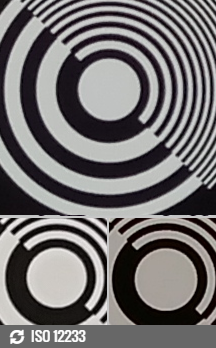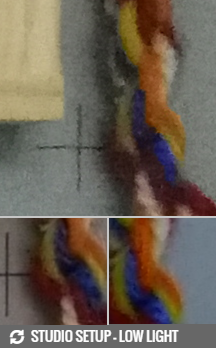Xiaomi Redmi Pro review: Peripheral vision
Peripheral vision

Camera
The Xiaomi Redmi Pro sports a dual-camera setup at the back. The main camera is a 13MP snapper (a Sony sensor) with f/2.0 aperture and phase-detection to make auto-focus faster. The secondary sensor is 5MP (Samsung sensor) and Xiaomi boasts it's used to produce DSLR-quality bokeh effects.
The camera interface is a custom MIUI job which hasn't changed much from the last version. You have two main options - photos and videos. The only change we could find is that swiping to switch between the two no longer works.
Still, the camera interface comes with familiar features. Manual Mode offers you settings for white balance and ISO. The Face Detection switch is within the additional settings. Tapping on the filters icon on the left gives you some fun color filters to play with.


The camera modes • the camera settings
However, the real fun comes with the secondary 5MP camera. Above the shutter is a little aperture icon, which allows you to adjust the f-number from f/0.95 (enhanced bokeh effect) to f/5.6 (more of the scene is on focus).

The Redmi Pro's depth-of-field camera at work
Furthermore, you can later adjust the focus of the photo from the Gallery app by tapping on the similar icon. There, you're presented with a simple slider to choose a new f-number and a new point of focus by tapping on the photo itself.




Adjusting the focus after taking a photo
Most of the time, the bokeh effect looks fine. However, a closer inspection reveals the transition between the area in focus and the blurred areas can be inaccurate around the edges of objects. The focus is fast enough, though.
The photos from the 13MP camera feature good detail, but the noise reduction is visibly taking too much from the foliage. Other than this, noise is low in general.
We're happy to report the colors are accurate. Mind you, there's just a slight yellow tint, but it's hard to notice. The dynamic range is overall good.






Xiaomi Redmi Pro camera samples
The selfie camera is 5MP with f/2.0 and can record 1080p video. The photos taken with it have a satisfactory level of detail with good colors and contrast.
Panoramic photos lose a lot of the color accuracy and detail of the regular photos, but that's to be expected. We've definitely seen worse, but the common pitfalls are here as well - notably jagged lines from moving objects.


Redmi Pro shoots panoramas as well
Check out how Redmi Pro's camera game fares against the competition in our Photo quality comparison tool.



Xiaomi Redmi Pro in our Photo quality comparison tool
Video quality
The Xiaomi Redmi Pro records 1080p video at 30fps. There are just two modes - time-lapse and slow-motion - with the latter available only at 720p.
The quality of the videos is pretty satisfactory. Contrast is excellent and colors are vibrant and true to life. There's minimal focus hunting.
You can also record a video and adjust the depth-of-field to reach a certain bokeh effect while at it. The user interface is identical to that of the photo mode.
Here's a video showing how changing the virtual aperture changes the depth of field.
The videos are recorded at 17.1Mbps, whereas audio is with a bitrate of 128Kbps. You can download an uncompressed sample (11s, 23MB) as well.
Finally, here's the Xiaomi Redmi Pro in our video comparison tool.
Reader comments
- Paulo Richard paulo
- 18 Oct 2021
- fmL
I need battery for redmi pro
- Vishnu N
- 21 Feb 2019
- vGP
There is a daily wallpaper feature that can showcase you a new wallpaper each day, and i m very much of loving it.
- Redmi Pro X25
- 18 Dec 2017
- KgW
Redmi Pro X25 is just beast to begin with. If you know your workaround with MIUI 8 or 9 you would be able to weild the X25's true potential. Disable bloats and unneccesary background processes. If you're rooted, you can get past the 45c thermal ...















